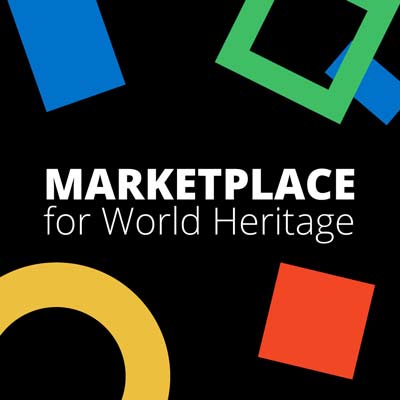Involving communities and indigenous people in the management of the Precolumbian Chiefdom Settlements
(Costa Rica)
The project aims to ensure the development of participatory management mechanisms through a participative and sustainable process that enable all stakeholders concerned to understand the process of the management of a World Heritage property and gradually encompass the necessary requirements for its protection.
The project answers to the concerns of the World Heritage Committee raised by Decision 40 COM 7B.3 as well as the common goals set by the “Action Plan for the implementation of the World Heritage Convention in the Latin America and the Caribbean Region” (PARALC 2014-2024) adopted by the States Parties of the region at Brasilia in 2014 and endorsed by Decision 38 COM 10B.4 of the World Heritage Committee.
Fund this project
US$ 100,000
Duration
1 year
Beneficiary
Local Communities ● Costa Rica
Category
Conservation ● Capacity Building
Document
Download project description
 Context
Context
The Precolumbian Chiefdom Settlements with Stone Spheres of the Diquís was inscribed on the World Heritage List in 2014.
In 2016, by Decision 40 COM 7B.3, the World Heritage Committee recommended the State Party to “establish cooperation mechanisms with local communities and indigenous groups and associations for management purposes” and “promoting educational activities and projects to involve local teams for monitoring and documentation tasks and development of monitoring indicators.”
The project hereby proposed answers to this request of the Committee as well as to the overall strategy of the “Action Plan for World Heritage in the Latin America and the Caribbean Region” (PARALC 2014-2024) endorsed by Decision 38 COM 10B.4 of the World Heritage Committee at its 38th session (Doha, 2014) and which emphasises the need to ensure the effective involvement of local and indigenous communities in the management of properties.
This project considers as a key strategy the follow up of the ensuing PARALC objective O5A1: Involve local and traditional communities and indigenous peoples in all processes of conservation and management of World Heritage properties.
 Outcomes
Outcomes
& Beneficiaries
- World Heritage social appropriation promoted;
- Improved communication between the national, regional and local government with the local communities and indigenous people;
- Involvement of the local communities and indigenous peoples in the management and conservation of the property;
- Understanding of the expectation of the local communities and indigenous peoples regarding future development of the property;
- Promotion of educational activities and projects to involve local teams for monitoring and documenting the property;
- Partnerships and/or networks established among the diverse local communities and groups of indigenous people living in the property and its near surroundings with NGOs, and other national or private associations or groups;
- Monitoring indicators developed resulting from the exchange between the national, regional and local institutions and the local communities and indigenous people and associations;
- Participatory Management cooperation mechanisms developed that involve local communities and indigenous groups and associations in the development of project and planning documents for the property.
 Objectives
Objectives
- Enhance the role of the local communities in the protection and management of the Precolumbian Chiefdom Settlements with Stone Spheres of the Diquís;
- To understand the expectations of the local communities and indigenous people regarding future development of the property and ensure their involvement in addressing the impacts of development (indicators);
- Promote dialogue between the various stakeholders from the regional and local government and the local communities involved in the management and conservation of the property in order to develop the necessary mechanisms for their inclusion;
- Promote strategic partnerships among the communities involved, the different levels of government, the private sector and other stakeholders of the civil society to generate funding that will benefit communities and contribute to the conservation of heritage;
- Develop management mechanisms focusing on successful practices related to the participation of the community and indigenous people that ensures the sustainable conservation of the property and the protection of the interests of the local communities and indigenous people;
- Establish a mechanism to periodically communicate and exchange, with the local communities and indigenous people, on projects and regulations regarding the property in order to fully involve them in the decision making process
 Relevance
Relevance
The project is grounded in the local context following inscription of the property on the World Heritage List and the complex dynamics raised by this inscription as experienced by the communities living in the property or its surroundings. In this sense, all project activities are geared toward the aim of achieving a deeper understanding of the right and duties provided by the World Heritage Convention, as well as building capacities for meaningful engagement of the communities involved with these dynamics.
The conservation and management of World Heritage properties require the increasing involvement of the local communities and the joint effort of the civil society and all stakeholders (associations, independent groups, etc). The project will provide expertise and tools to stakeholders and policy makers to consider the point of view from the local communities and indigenous people when developing the management tools, regulations and development projects for the property.
In the framework of the elaboration of the PARALC 2014-2024, all the States Parties showed full commitment on the implementation of its objectives. Therefore, there is a real opportunity to strengthen the participation and social inclusion of local communities in the decision-making processes for the management of World Heritage properties in the region.
 Timeline
Timeline
- Month 1 to month 11: .
- Phase 1: local stakeholder meetings – identification
- Phase 2: national seminar-workshop
- Phase 3: methodology & elaboration of mechanisms and indicators
- Phase 4: national workshop for the discussion and finalisation of the mechanisms and indicators
- Phase 5: dissemination and socialisation of the mechanism and indicators
- Month 12: reporting of the project to the donor
 Budget
Budget
An estimated overall extra-budgetary funding of US$ 100,000 is needed for the implementation of this project.
These funds will cover consultants’ fees, national technical coordinator, travel and accommodation expenses, communications, joint report production, as well as translation in the two official languages of the Convention, design and printing of the appropriate information material.
 Visibility
Visibility
A communication & visibility plan will be developed in consultation with the donor(s) and will include (but not limited to) the options below:
|
Visibility material |
Placement / Event |
Outreach |
Audience |
|
|
Information on the project on WHC’s website |
Logo |
WHC website: whc.unesco.org |
Public |
Statistics for 2016: 13,340,000 visits 9,735,000 unique visitors 41,650,000 pageviews |
|
Reports to the World Heritage Committee |
Logo |
World Heritage Committee session |
WH Committee members, Observers, NGOs, site-managers, press |
Approx. 2,000 participants from 193 countries |
|
Side-event |
Logo + speech |
|||
|
Article in the World Heritage Review |
Logo |
“World Heritage Review” Magazine and “World Heritage Information” |
Public |
Approx. 20,000 targeted subscribers |
 Contact
Contact
Cesar Moreno-Triana
Project Officer
World Heritage Centre
Latin America and the Caribbean Unit
c.moreno-triana@unesco.org



 Costa Rica
Costa Rica